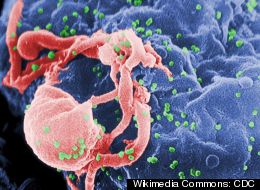 |
| Lisa Biermann has been dedicated to the improvement of her son’s quality of life. Thus far, she has experienced the miracle of hearing her son speak, as well as many other accomplishments, after she was told he would never be able to perform everyday tasks. |
Biermann diagnosed with cerebral palsy
at birth
By Pamela Cote
Staff Writer
pamela@myspartanews.com
What makes Tyler so very special is the great physical hurdles he has overcome in the past 12 years of his life to be able to do the things that most boys his age seem to do so effortlessly.
Lisa refused to give up hope. She tried everything she could to help Tyler. Tyler could not walk because his feet would not sit flat on the floor. She tried botox injections every three months, braces, casts and even ankle cord surgery. Nothing worked.
Lisa said Tyler could not communicate with her at all. She never knew when he was in pain because he was unable to tell her.
Tyler was considered to be blind, with a prescription that was over nine units nearsighted, and his eyes jumped around. Even with glasses, he could not focus his vision, and doctors did not believe he could see, or ever would see.
Until he was 8 years old, Lisa would carry Tyler from his classes at Woodland Park Elementary.
When Tyler was 8, he had a seizure. Dr. David Steenblock, who is based in California, heard about Tyler and offered to help him with umbilical cord stem cell therapy. Lisa said she thought hard about it, and because she had tried everything else and nothing had worked, she decided to try the stem cell therapy, which Dr. Steenblock told her had no side effects.
In December 2007, Lisa, Dr. Steenblock and his team took Tyler for the treatment, which had to be done in Tijuana, Mexico, because stem cells injection is currently not legal in the United States. Three months later, they went for a second injection.
The stem cells were given to Tyler intravenously for a period of approximately 45 minutes.
Lisa said within weeks, she saw monumental changes in Tyler. All the milestones he never reached as a baby, he began reaching.
Within three months Tyler could put his feet flat on the floor and could walk independently. At six months post-treatment, he no longer needed the painful braces that gave him bunions.
Also within the first three months, Tyler took off his glasses and told Lisa, “no see, Mom.” When Lisa took Tyler to the eye doctor, his vision had improved from nine units nearsighted to 5.5. At six months post-treatment he had improved to four units. He is now at about 1 unit nearsighted and his doctor does not believe that he needs to wear his glasses. Even more impressive is that he can communicate and answer questions posed by the eye doctor.
In fact, Tyler, who could not communicate at all before his stem cell treatment, can now say hundreds of words. He can recite the alphabet. Tyler can spell and is even starting to read. He makes the honor roll and has received two spotlight awards from school for his progress.
Tyler helps with household chores, can walk up and down the stairs and pour himself something to drink. In December, he decided that he wanted to ride a bike and could not be discouraged from trying. To her great surprise, Lisa said Tyler not only climbed onto his friend’s bike, but he started peddling as well.
There have been setbacks along the way. Last April, Lisa took Tyler to the doctor because his blood pressure was very high. The doctor noticed that Tyler had no pulse in his legs and had an MRI performed.
The MRI showed that Tyler had a rare birth defect. He only had two heart valves and his aorta was pinched. The MRI also showed that Tyler’s veins and arteries had formed a web around his heart and major organs to supply them with blood. Lisa credits the stem cells for protecting Tyler’s organs.
Tyler had surgery to repair his aorta and has recovered well.
“He improves every single day,” Lisa said.
Lisa hopes to take Tyler for another stem cell treatment this summer. She wants everyone to know that there is hope and shares her experiences and links to others’ stories on her website, www.stemcellhelps.com.



